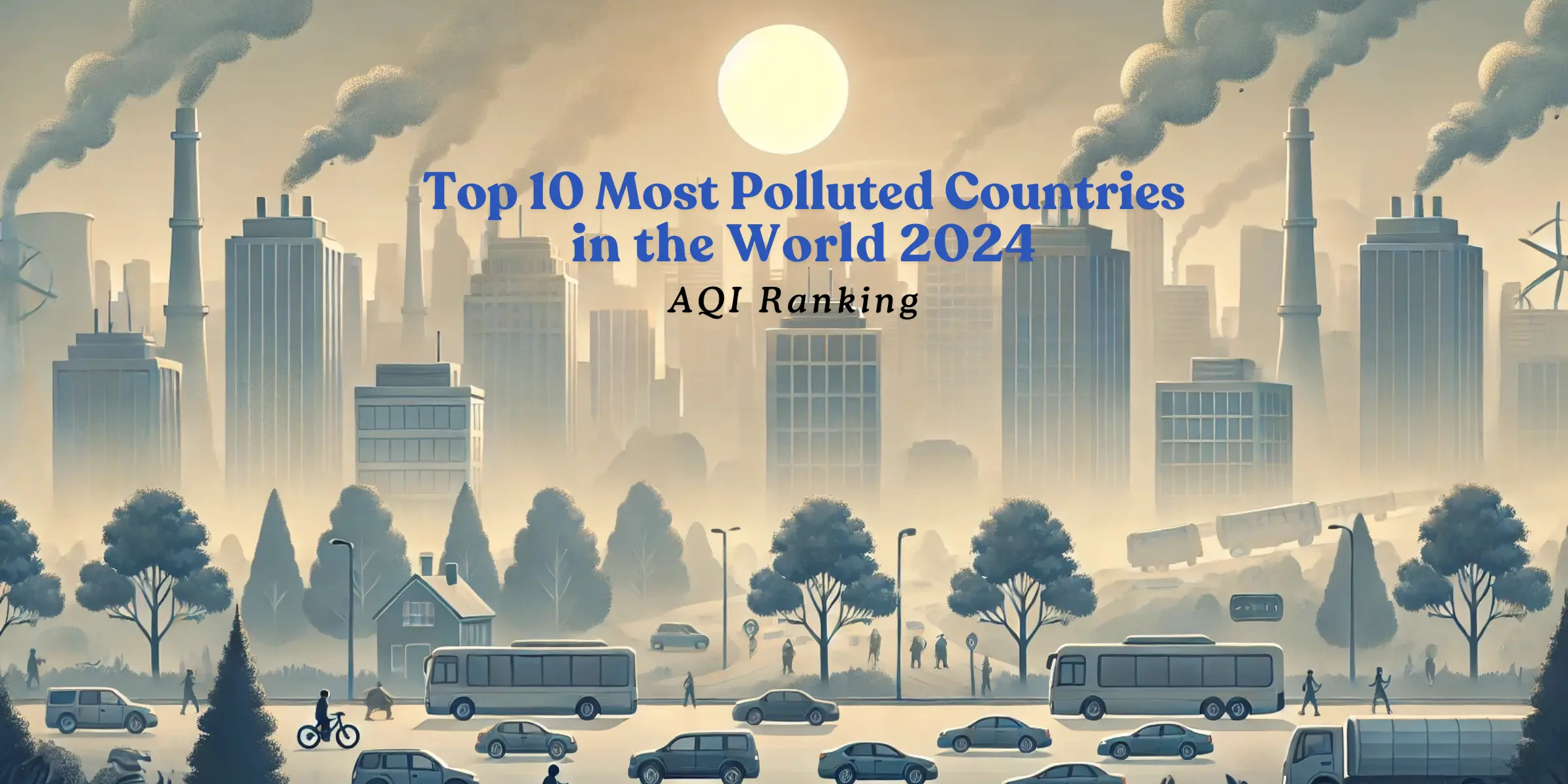The global air pollution crisis has reached alarming levels, with numerous countries experiencing significant air quality deterioration. In 2024, the World Health Organization (WHO) guidelines and AQI (Air Quality Index) provide a clear picture of the environmental health risks faced by various nations. This blog will examine the top 10 most polluted countries, focusing primarily on AQI rankings while utilizing PM2.5 data for assessing exposure to harmful particles. The insights will be based on comprehensive data for 2024 and highlight the pressing need for urgent action.
AQI Ranking Overview: The Most Polluted Countries in the World 2024
According to the latest AQI data, the following countries have the poorest air quality:
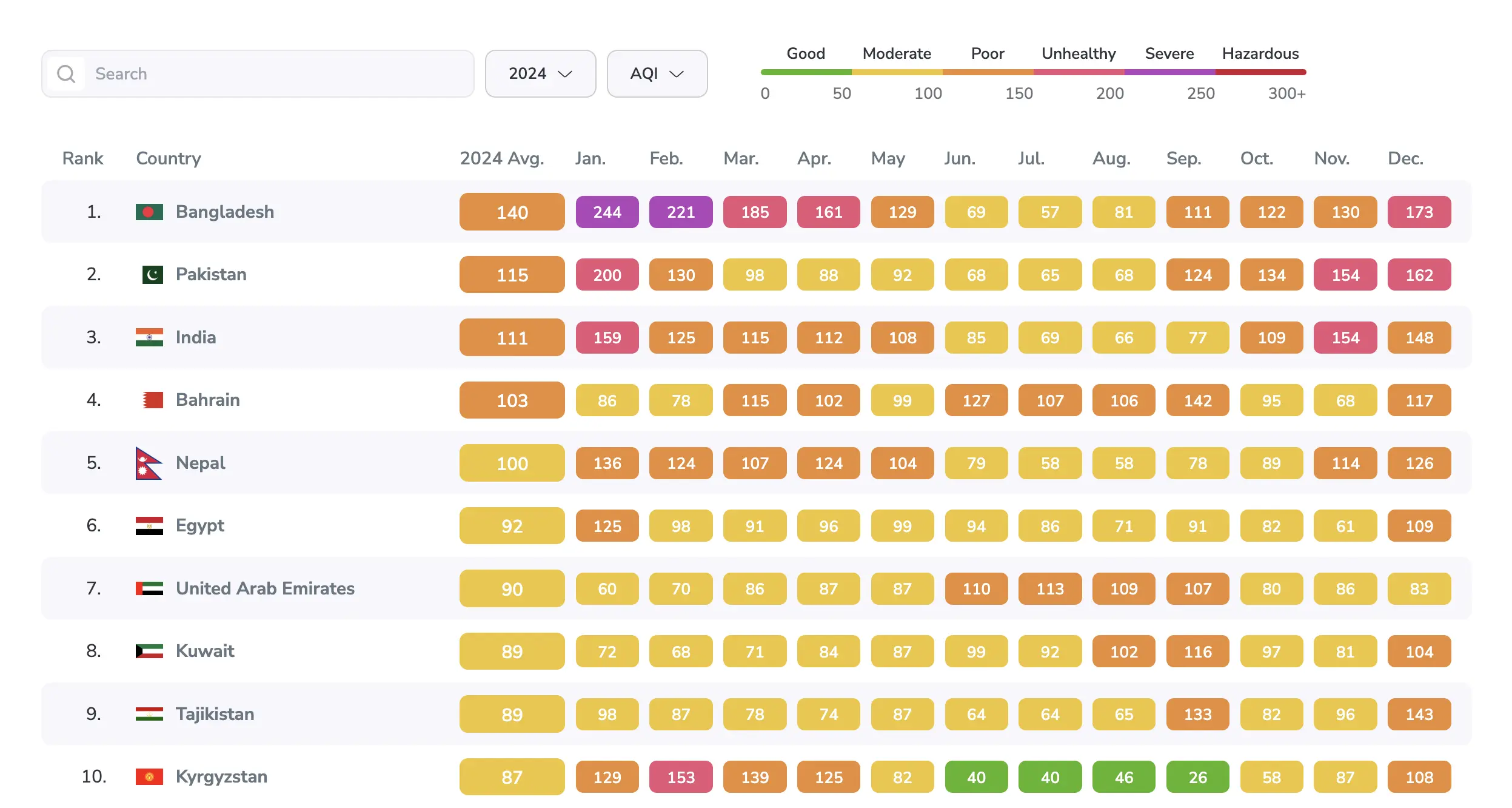
1. Bangladesh (AQI Rank 1)
2024 AQI Average: 140
Bangladesh is the most polluted country in the world in 2024. The AQI data reveals a dangerously high average score of 140, indicating severe pollution levels. The AQI for January, for instance, reached a hazardous level of 244, marking one of the worst months in terms of air quality. The country faces multiple sources of pollution, including vehicle emissions, industrial activity, and the burning of biomass. According to WHO’s PM2.5 guidelines, Bangladesh’s average of 75 µg/m³ of PM2.5 far exceeds the recommended limit of 10 µg/m³, further highlighting the health risks its citizens face.
Air Quality Analysis:
-
- PM2.5 Levels: Bangladesh’s PM2.5 levels (75 µg/m³) are among the highest globally, particularly during the winter months, which experience severe smog. This high concentration of fine particulate matter contributes to respiratory diseases, cardiovascular problems, and even premature mortality.
- Health Impact: People living in Bangladesh are regularly exposed to unsafe air, which results in a variety of health problems. The WHO estimates that exposure to PM2.5 can shorten life expectancy by several years.
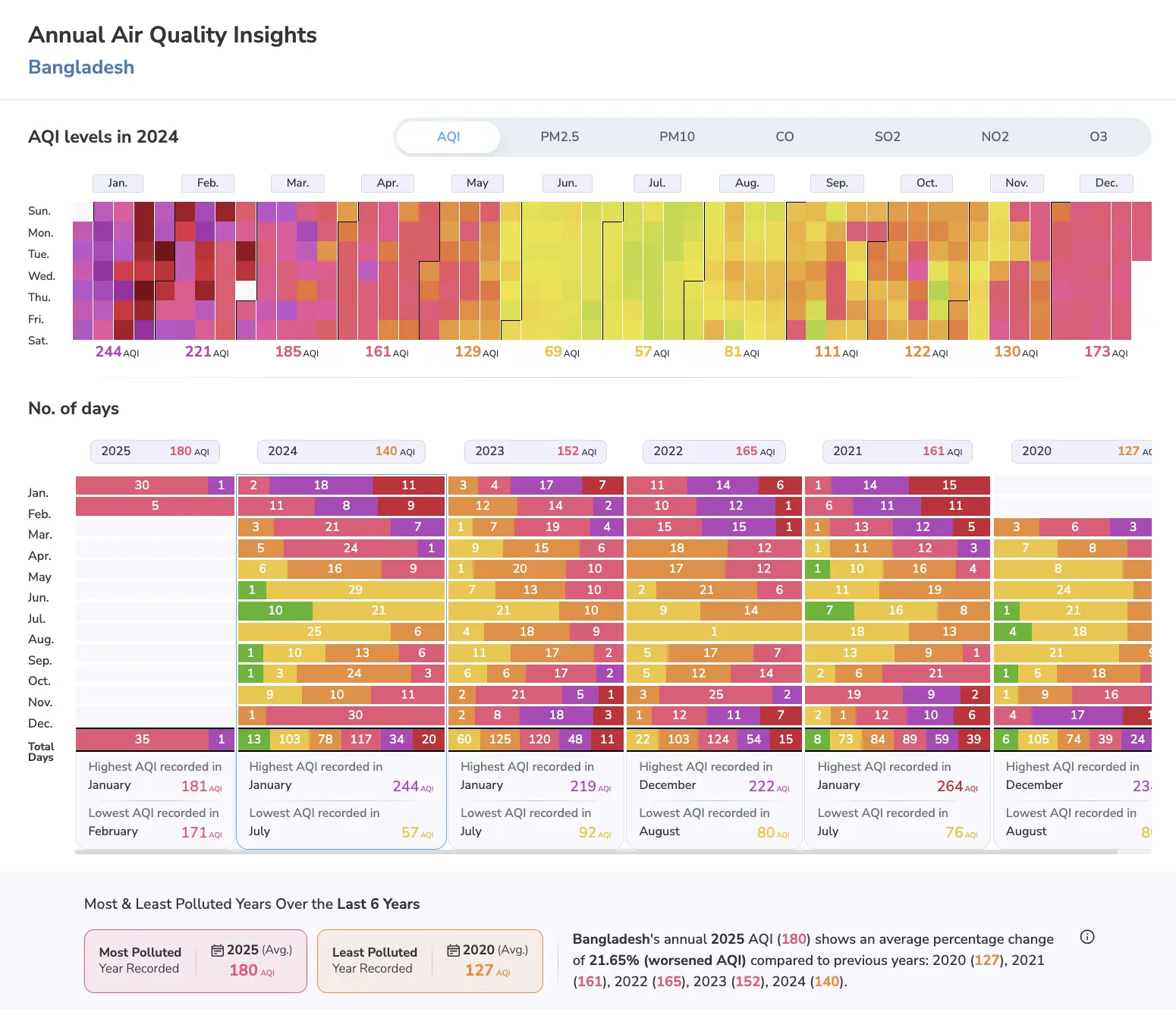
2. Pakistan (AQI Rank 2)
2024 AQI Average: 115
Pakistan ranks second for air pollution in 2024. The country’s AQI average of 115 suggests moderate to poor air quality, with occasional hazardous peaks, especially in urban centers like Lahore and Karachi. In January, the AQI peaked at 200, reflecting serious pollution levels.
Air Quality Analysis:
-
- PM2.5 Levels: With an average PM2.5 level of 55 µg/m³, Pakistan also exceeds the WHO’s recommended threshold. Major contributors include industrial emissions, transportation, and agricultural burning, all of which are widespread in the country.
- Health Impact: The air quality in Pakistan is linked to an increase in respiratory diseases, allergies, and chronic conditions. Air pollution is estimated to cause thousands of premature deaths each year in Pakistan.
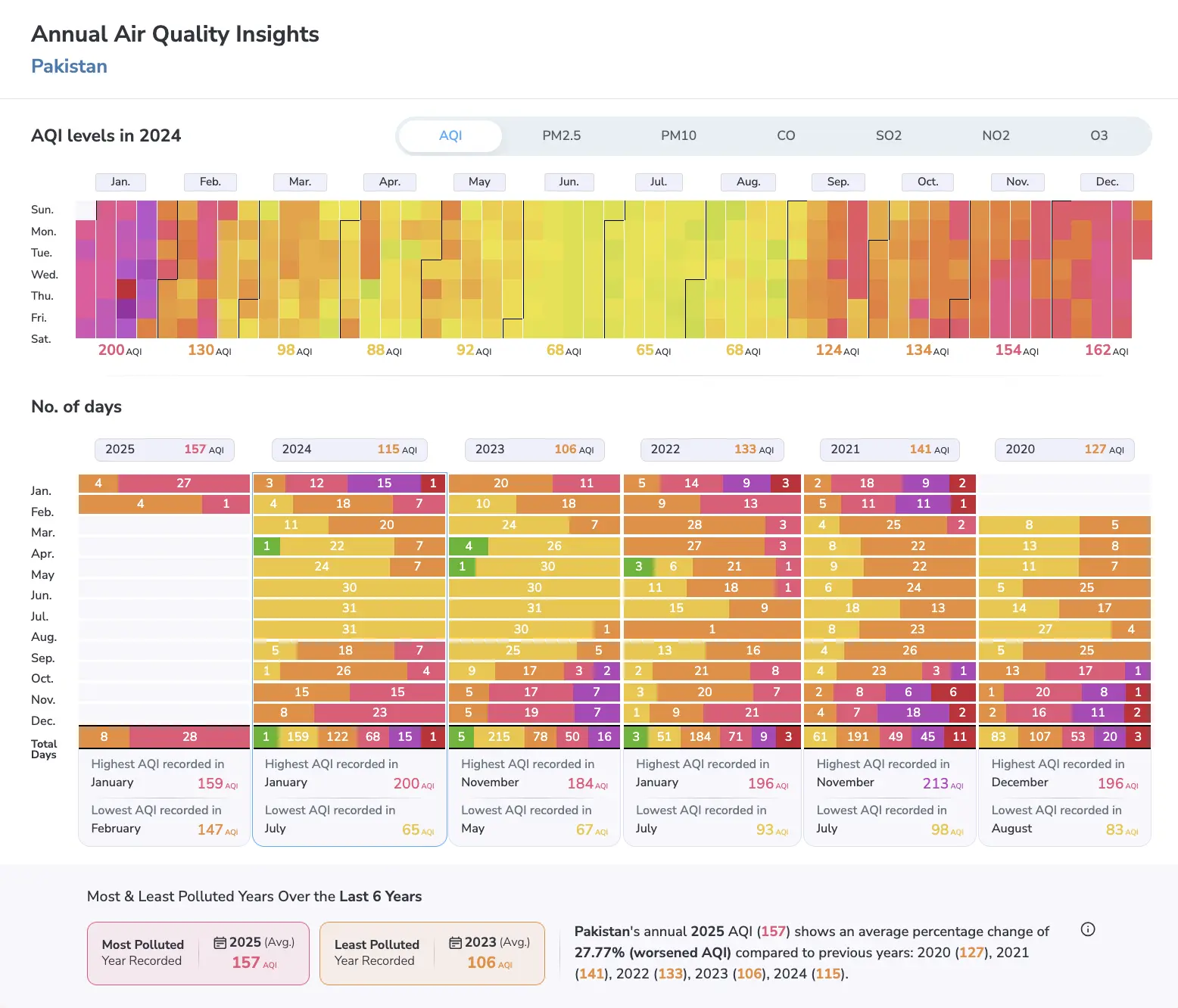
3. India (AQI Rank 3)
2024 AQI Average: 111
India holds the third spot in the AQI rankings for 2024. With an AQI average of 111, India’s air quality fluctuates from poor to unhealthy, often surpassing hazardous levels in cities like Delhi and Mumbai. The pollution reaches its worst in the winter months, when the AQI has been known to exceed 200.
Air Quality Analysis:
-
- PM2.5 Levels: India faces an average PM2.5 level of 48 µg/m³, well beyond the WHO guidelines. The primary sources of PM2.5 include vehicular emissions, industrial pollutants, and crop burning in rural areas.
- Health Impact: Poor air quality in India leads to increased rates of respiratory illnesses, heart disease, and other chronic conditions. The country’s air pollution has led to a substantial burden on public health systems.
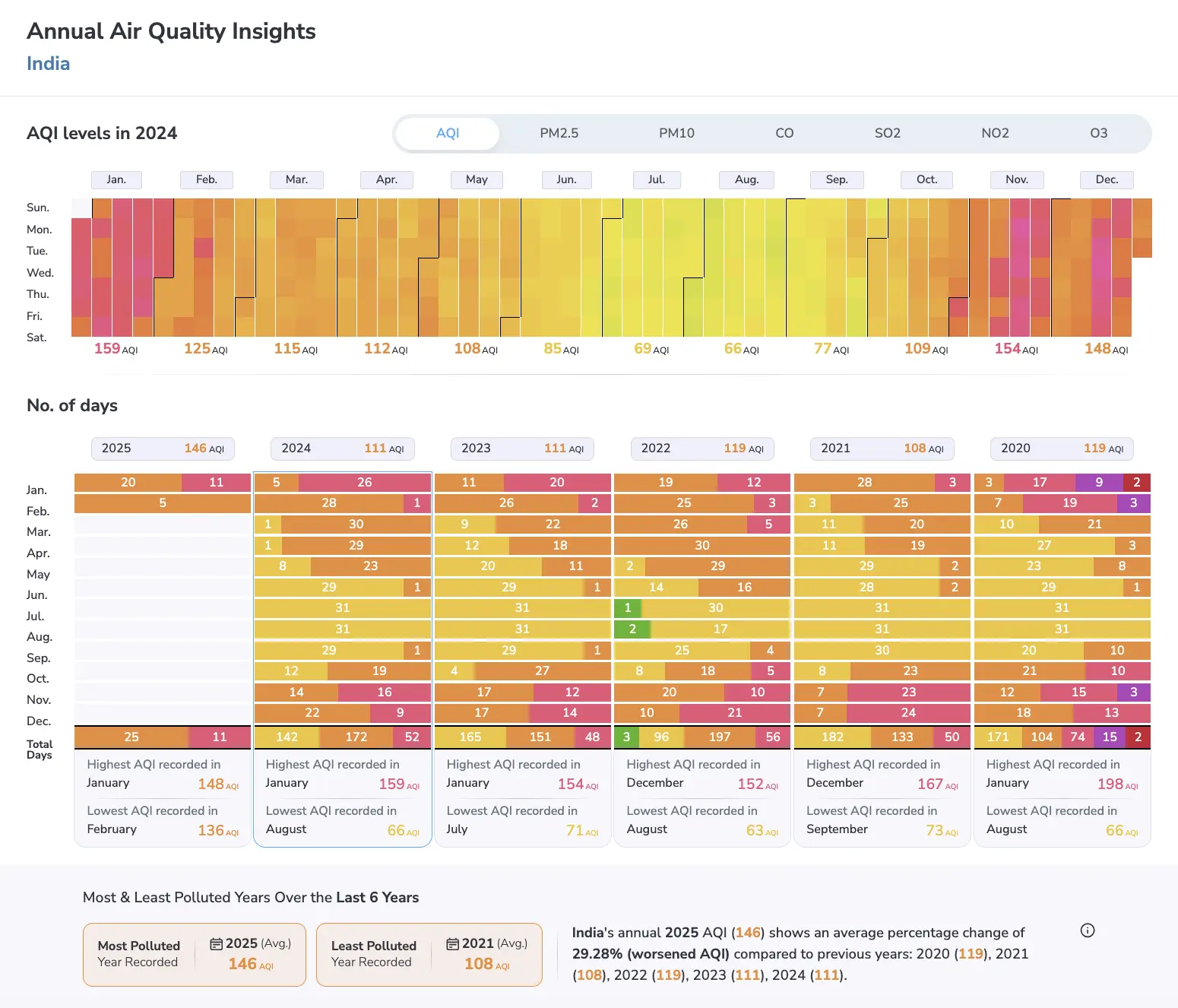
4. Bahrain (AQI Rank 4)
2024 AQI Average: 103
Bahrain ranks fourth in 2024 with an AQI average of 103. Although Bahrain’s AQI does not reach the extreme levels seen in South Asia, the air quality remains unhealthy for sensitive individuals. The AQI peaks in winter, similar to other Middle Eastern countries, due to dust storms and high vehicular emissions.
Air Quality Analysis:
-
- PM2.5 Levels: Bahrain’s average PM2.5 level stands at 38 µg/m³, still above the WHO guidelines for safe levels. The major sources of air pollution are traffic, industrial emissions, and natural dust storms.
- Health Impact: Residents, particularly those with pre-existing respiratory conditions, experience worsened health during months of poor air quality.
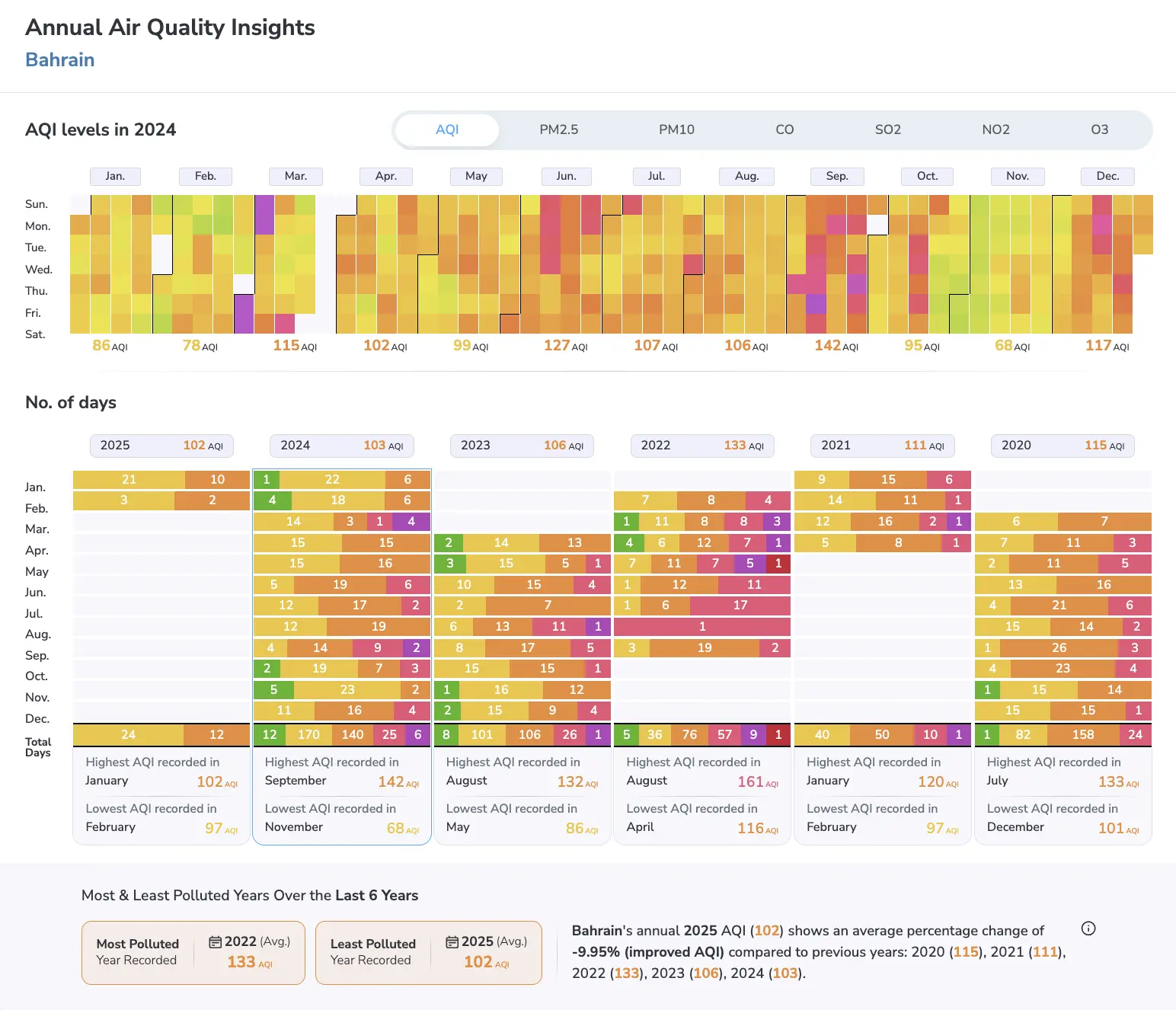
5. Nepal (AQI Rank 5)
2024 AQI Average: 100
Nepal ranks fifth with an AQI average of 100. While this places the country in the moderate category for air quality, air pollution spikes dramatically during the dry season, when the AQI often exceeds 150.
Air Quality Analysis:
-
- PM2.5 Levels: Nepal has a relatively high PM2.5 concentration at 39 µg/m³. Major contributors to this pollution are vehicular emissions, deforestation, and burning of biomass for cooking.
- Health Impact: People in Nepal are vulnerable to air pollution-related health issues, particularly those living in urban centers like Kathmandu.
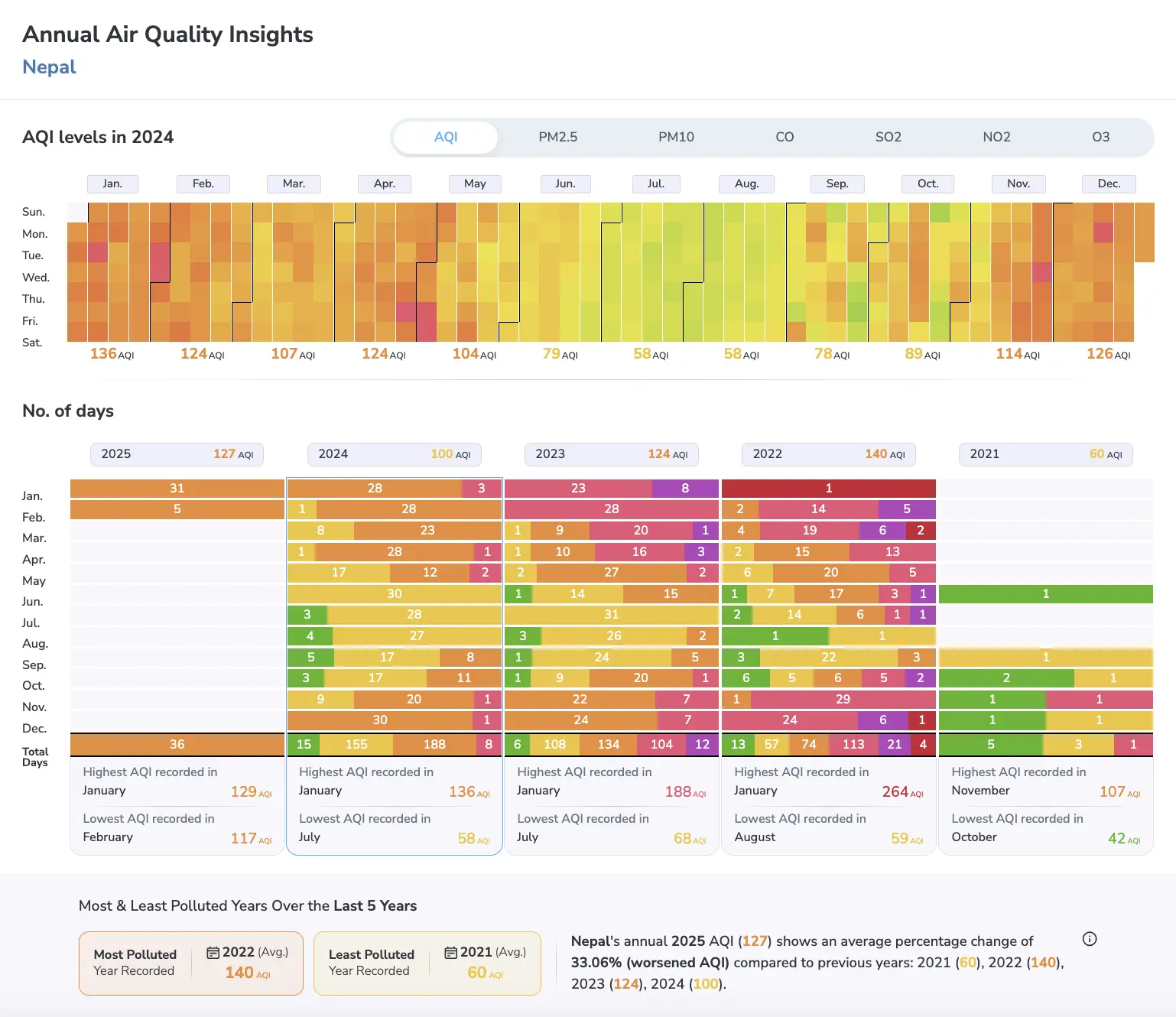
6. Egypt (AQI Rank 6)
2024 AQI Average: 92
Egypt, ranked sixth, faces a moderate level of air pollution with an AQI average of 92. The country’s pollution problems are exacerbated by industrial activities, transportation emissions, and seasonal dust storms, particularly in Cairo.
Air Quality Analysis:
-
- PM2.5 Levels: Egypt’s PM2.5 level stands at 35 µg/m³. The combination of traffic congestion and industrial pollution leads to consistently high PM2.5 concentrations.
- Health Impact: The exposure to high levels of particulate matter in Egypt poses significant health risks, contributing to a rise in respiratory and heart-related diseases.
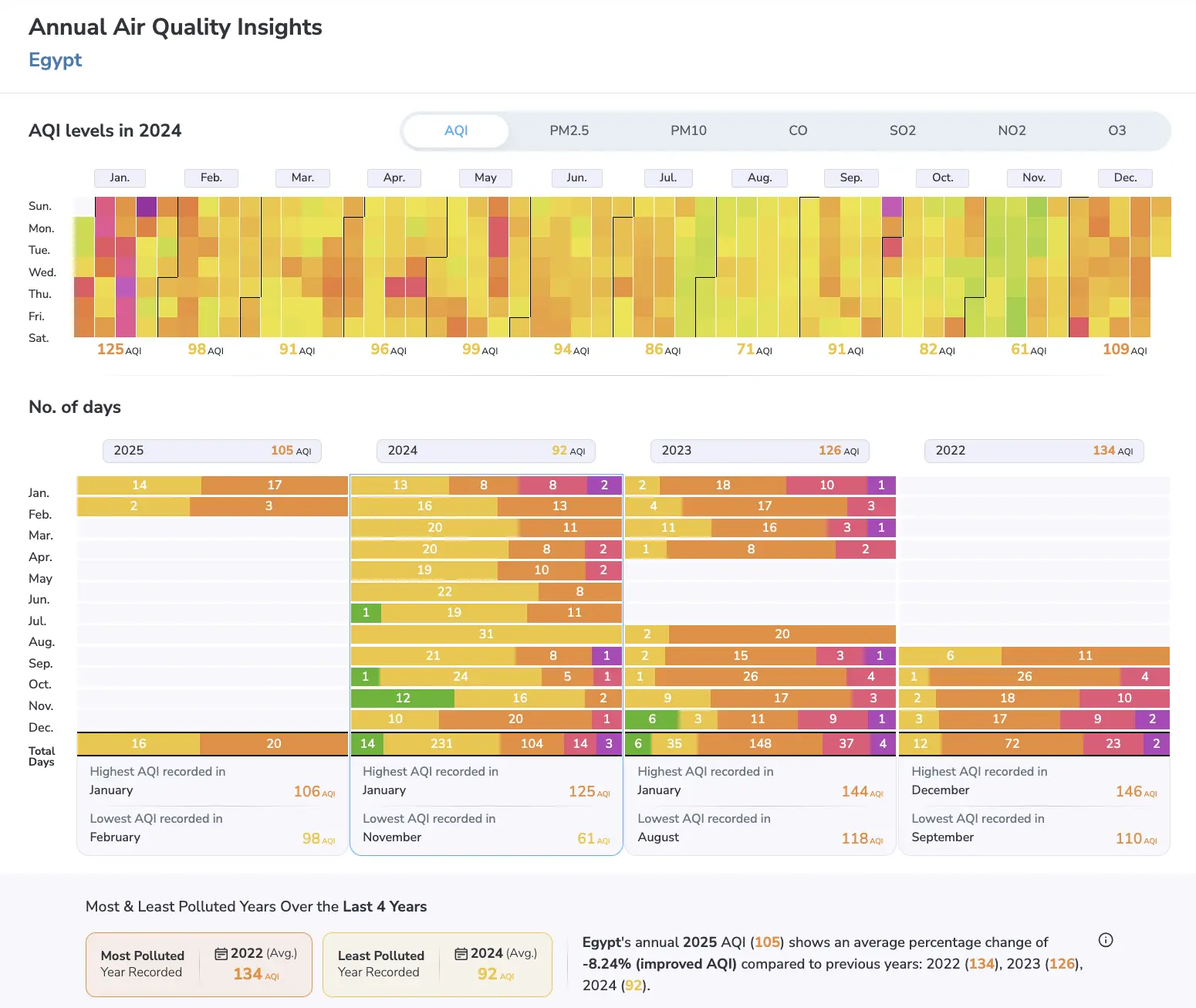
7. United Arab Emirates (AQI Rank 7)
2024 AQI Average: 90
The United Arab Emirates (UAE) ranks seventh in 2024, with an AQI average of 90. The air quality is relatively moderate, but pollution levels surge during the summer months due to high temperatures and dust storms.
Air Quality Analysis:
-
- PM2.5 Levels: The UAE’s PM2.5 concentration is 32 µg/m³, surpassing the WHO’s safety limits. The major sources of pollution are construction activities, transportation, and industrial emissions.
- Health Impact: Air pollution in the UAE has been linked to respiratory issues, eye irritation, and cardiovascular diseases. Vulnerable groups such as the older people and children are particularly affected.
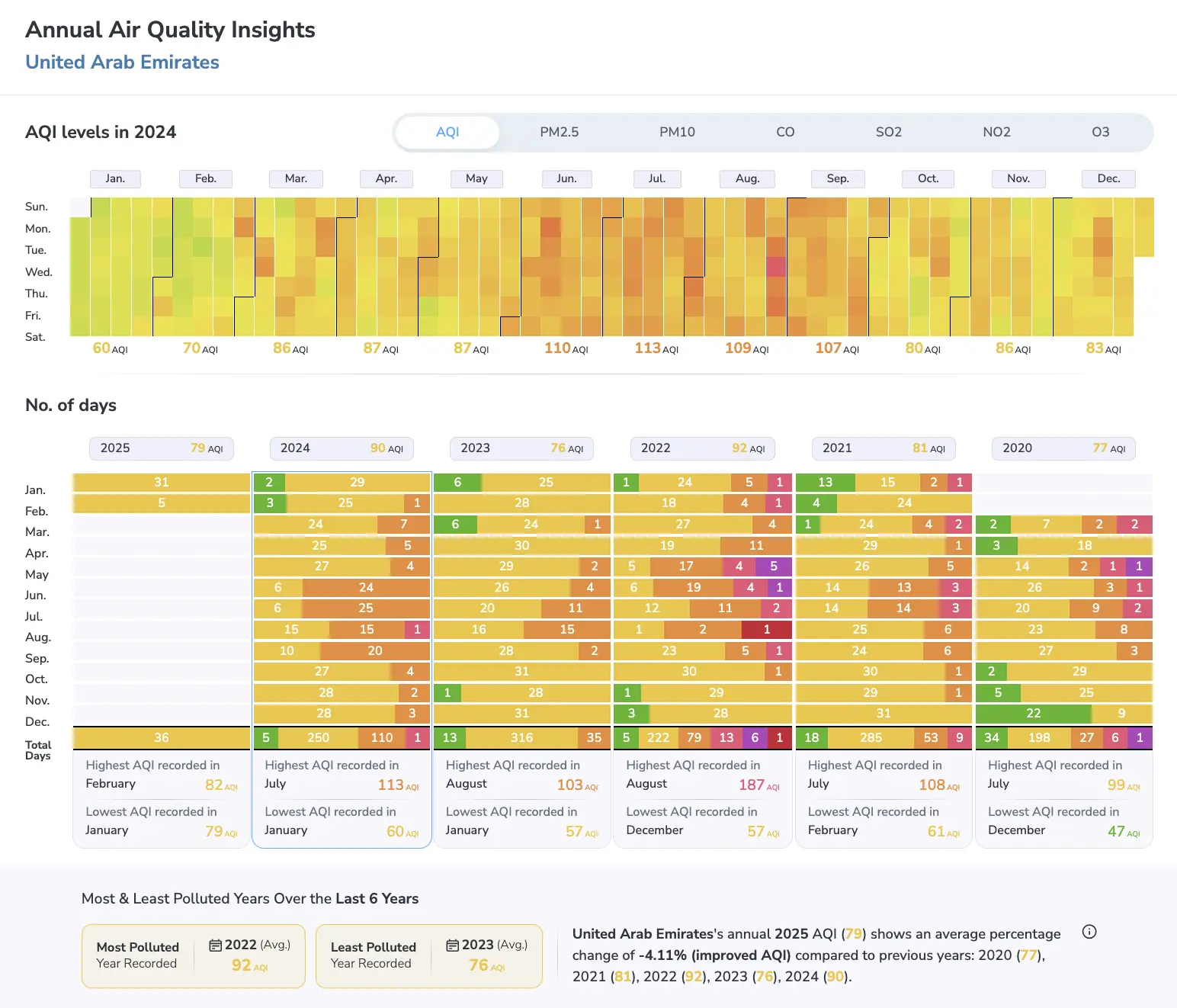
8. Kuwait (AQI Rank 8)
2024 AQI Average: 89
Kuwait ranks eighth with an AQI of 89, reflecting moderate air quality throughout the year. However, pollution levels can peak during the summer due to dust storms and industrial activities.
Air Quality Analysis:
-
- PM2.5 Levels: Kuwait’s PM2.5 level is 34 µg/m³, posing significant health risks when prolonged exposure occurs.
- Health Impact: Chronic exposure to air pollution can lead to respiratory diseases and exacerbate existing heart conditions, particularly in urban centers.
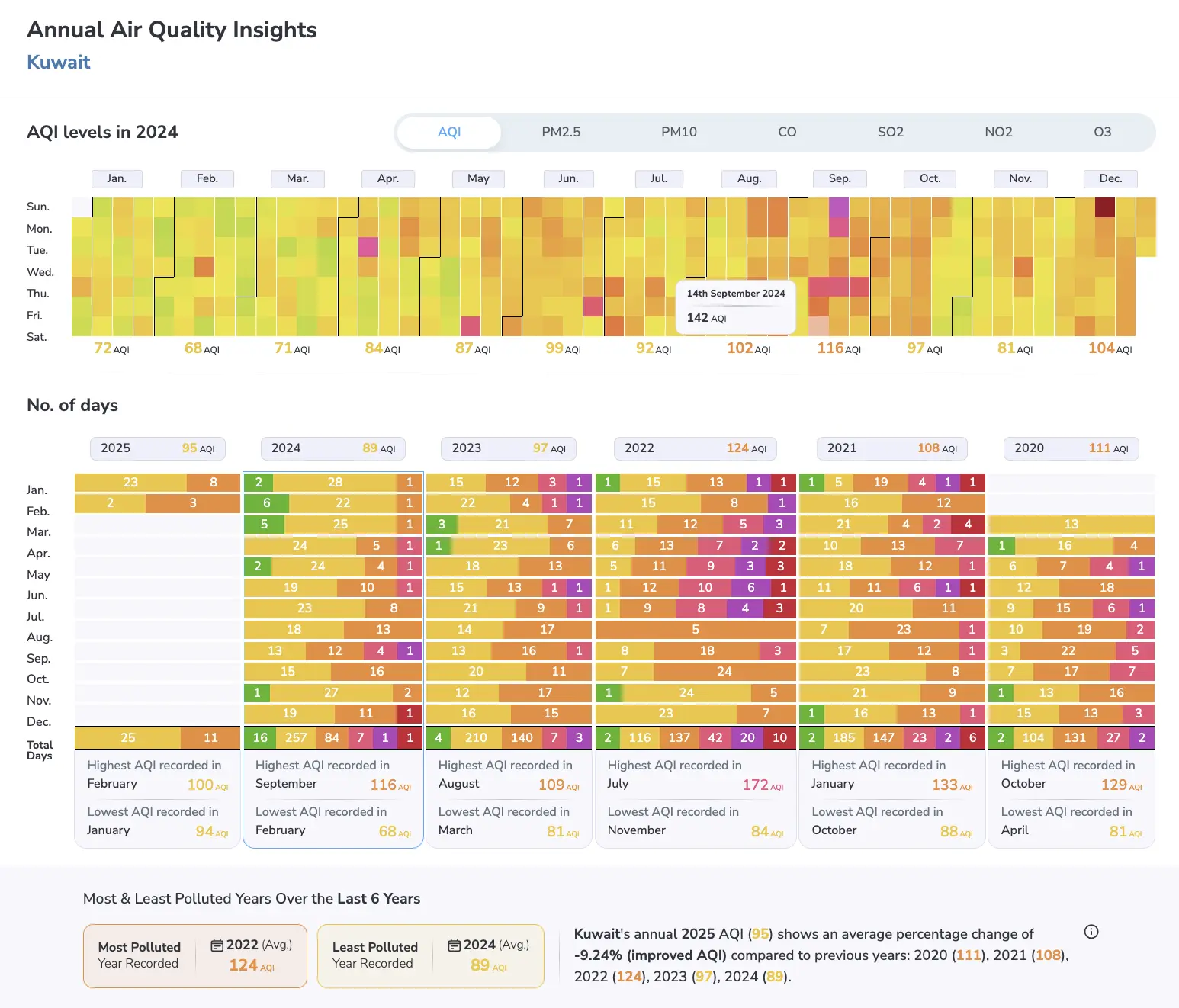
9. Tajikistan (AQI Rank 9)
2024 AQI Average: 89
Tajikistan shares the same AQI as Kuwait, averaging 89. Like many Central Asian nations, air pollution in Tajikistan is caused by a combination of vehicular emissions, industrial activities, and biomass burning.
Air Quality Analysis:
-
- PM2.5 Levels: With a PM2.5 concentration of 34 µg/m³, Tajikistan exceeds WHO’s recommended limits.
- Health Impact: The poor air quality poses a risk to public health, contributing to respiratory problems and cardiovascular diseases.
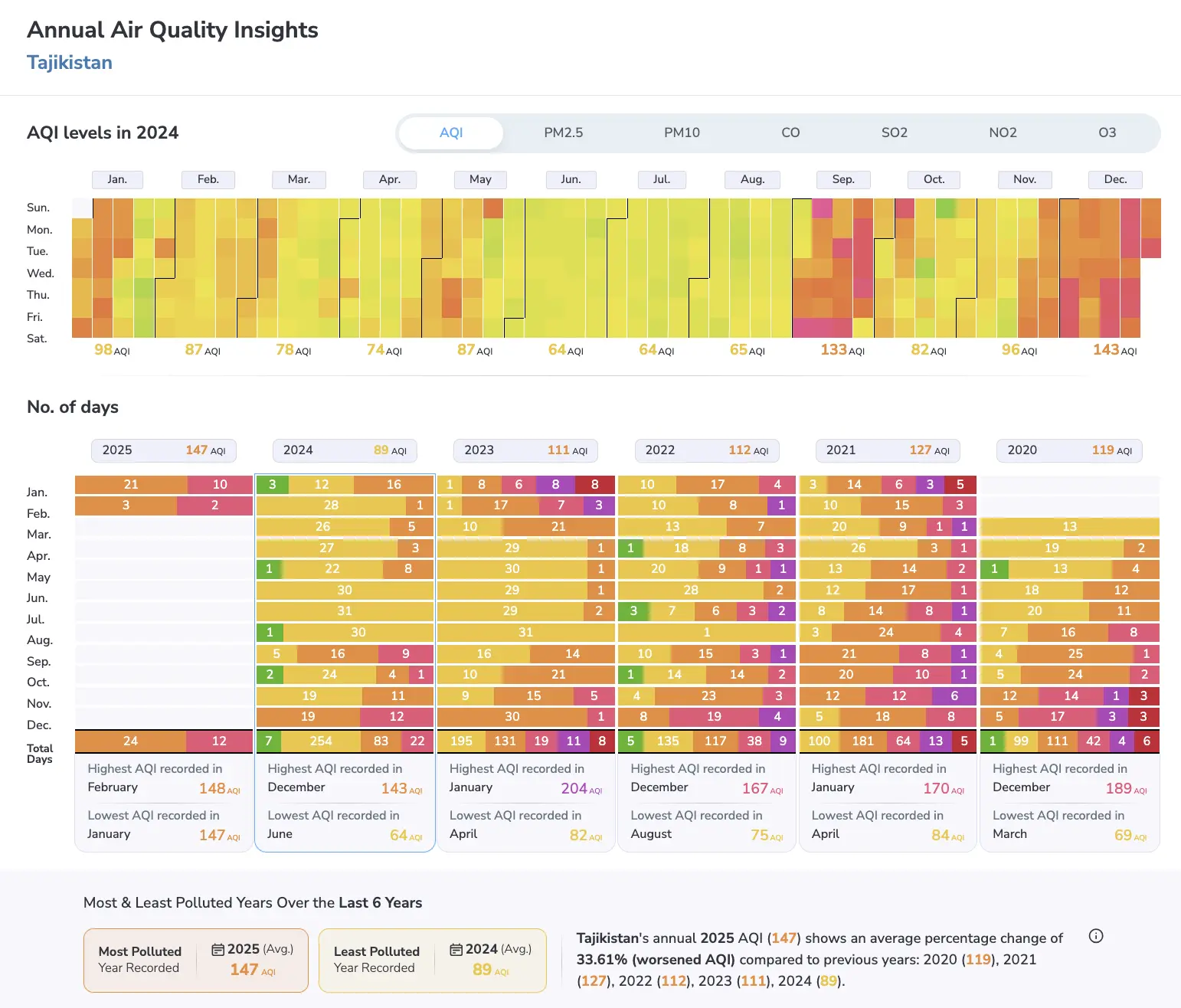
10. Kyrgyzstan (AQI Rank 10)
2024 AQI Average: 87
Kyrgyzstan rounds out the top 10 with an AQI of 87. While air quality in the country is relatively moderate, it frequently crosses into unhealthy levels due to natural factors like dust storms and the burning of agricultural residues.
Air Quality Analysis:
-
- PM2.5 Levels: Kyrgyzstan has a PM2.5 level of 44 µg/m³, far surpassing the WHO guidelines.
- Health Impact: Exposure to these levels of particulate matter increases the risk of respiratory issues, especially during the winter months when air pollution is at its peak.
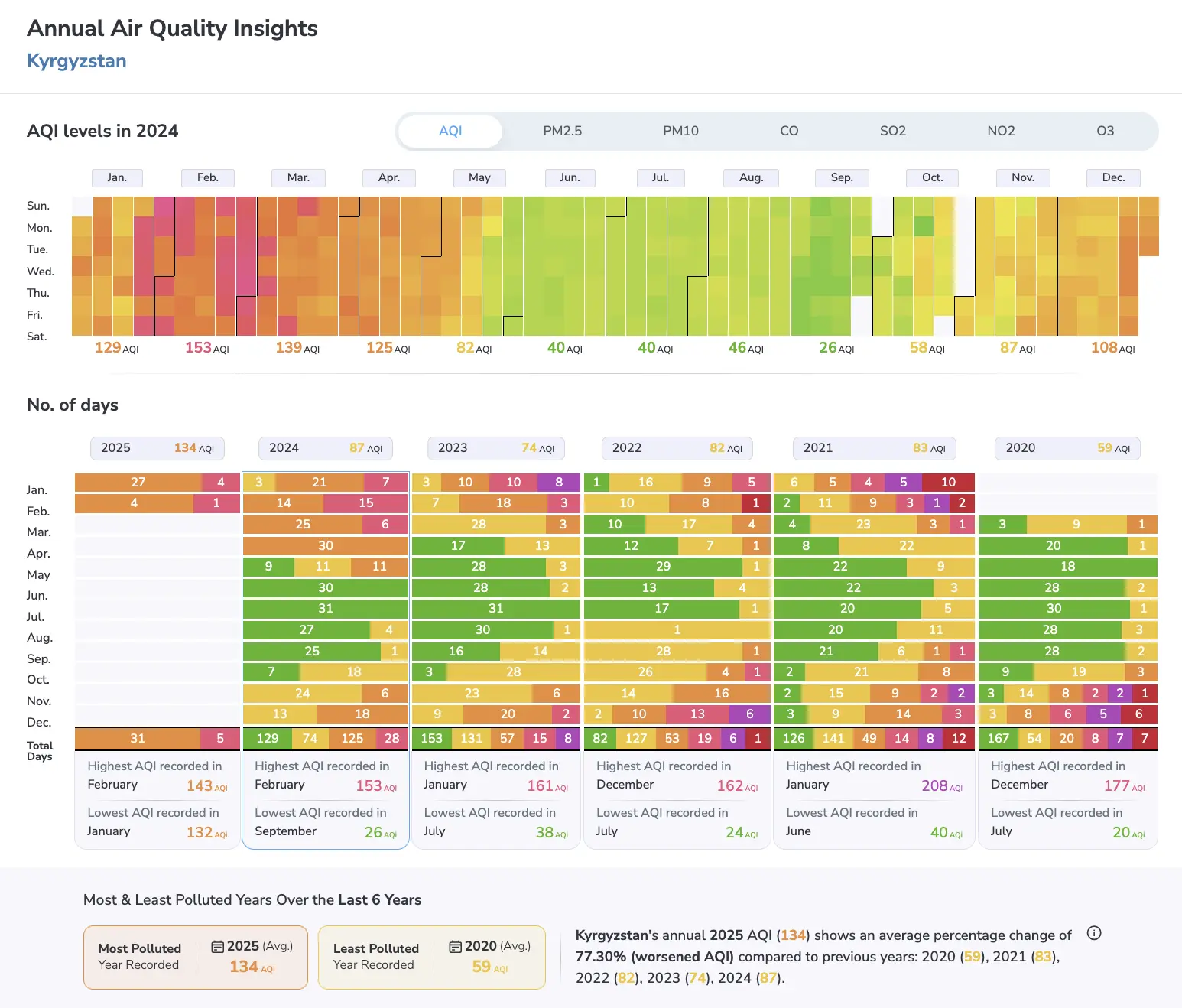
Conclusion: The Need for Immediate Action
The data on air quality and PM2.5 levels for 2024 paints a grim picture for the most polluted countries. The rankings are not just numbers; they represent the severe health risks and environmental damage caused by air pollution. From Bangladesh, the worst affected, to Kyrgyzstan, the risks associated with poor air quality are widespread. Each country must urgently adopt stricter environmental regulations, reduce emissions from industrial and vehicular sources, and invest in green technologies.
By addressing air quality issues, these nations can improve the health and well-being of their populations and contribute to a more sustainable future for the planet. It’s time for governments to take decisive action and for individuals to be aware of the air they breathe, promoting collective efforts to reduce pollution.
Also, Explore the Most Polluted Cities in the World 2024 Ranking

